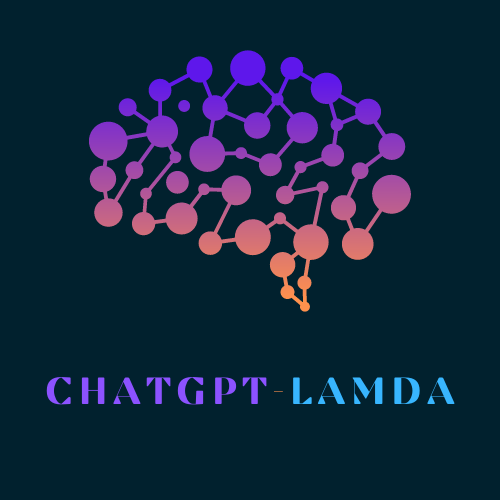The world of education, much like many other sectors, is experiencing a seismic shift propelled by technological evolution. Forefront in this transformation is Artificial Intelligence (AI), which is rapidly making its way into classrooms, curriculums, and education policy. This technology, cryptic as it may seem, holds immense potential to unlock a new era of personalized learning, enhanced engagement, and improved efficiency in the education of tomorrow. However, as with any significant change, there are valid concerns and challenges to be acknowledged and addressed. Our exploration delves into the intriguing intersection of AI and education—to uncover its basic constructs, evaluate its benefits and limitations, highlight real examples of its application, and gaze into its promising yet uncertain future.
The Basics of AI in Education
Understanding AI in Education
Artificial Intelligence (AI) in education refers to the integration of automated or semi-automated systems that can perform tasks typically requiring human intelligence, in teaching and learning processes. This technology can interpret complex data, learn from its experiences, adapt to new inputs, and carry out tasks like speech recognition, problem-solving, or learning. AI-powered applications in education can range from intelligent tutoring systems and virtual personal assistants to AI chatbots and adaptive learning software.
Understanding the Function and Importance of AI in Education
Artificial Intelligence (AI) is rapidly transforming the landscape of education in contemporary society. By utilizing pattern recognition, AI can identify the unique learning style, strengths, and areas of improvement for each student. This allows the creation of adaptive learning programs that precisely cater to individual learning needs. Intelligent tutoring systems, another manifestation of AI, provide immediate feedback along with virtual personalized tutoring. This, in turn, aids in better comprehension of complex concepts. The integration of AI in the educational setting serves dual purposes; it not only facilitates personalized learning for students, but also assists teachers and administrators in grading and lesson planning. This effective division of tasks leaves educators with more time for personal interaction with students. Such an adaptive and interactive method has begun to recast the way students assimilate and process knowledge, marking AI as an increasingly significant contributor to educational practices transformation.

Benefits and Limitations of AI in Education
Exploring the Advantages of AI in Education
Artificial Intelligence has the potential to significantly enhance the educational experience. Personalized learning caters to one of the major benefits that AI introduces; by identifying and adapting to the unique learning speed and style of each student, it delivers custom-made lessons that help them overcome individual challenges and optimize their strengths. Additionally, it introduces a heightened level of efficiency in the educational sector by automating routine tasks such as grading and scheduling, making valuable time available for educators to concentrate on teaching and engaging with students. AI’s contributions extend further by boosting accessibility, thereby democratizing education even for students in remote locations or those with disabilities. For example, AI technologies such as speech recognition can greatly aid in information assimilation for students with special educational needs. Besides, AI creates a more stimulating learning experience by developing interactive applications and games, further fostering student enthusiasm for learning.
Challenges of Integrating AI in Education
While AI holds immense potential for revolutionizing the education sector, it is essential to be aware of its limitations. The collection and analysis of extensive student data that AI requires can raise significant concerns regarding data privacy. The potential risk of such sensitive information falling into the wrong hands cannot be overlooked. Additionally, the high costs associated with implementing AI solutions can be a deterrent for many institutions, as they may lack the necessary funds to invest in sophisticated AI technologies. Another critical consideration is the diminished human interaction synonymous with AI-based learning, which threatens the crucial teacher-student relationship. With AI, students could potentially miss out on moral, ethical, emotional, and behavioral education that human teachers are equipped to provide. Recognizing these hurdles is a critical step towards harnessing the advantages of AI while mitigating the risks associated with its use in education.

Examples of AI in Education
AI Tutoring Systems: Personalized Instruction with a Focus on Individual Learning
Despite the challenges, AI has found substantial applications in the education sector, such as AI-driven tutoring systems. Prime examples of these include Mika by Carnegie Learning and Third Space Learning. These advanced tutoring systems use AI to offer individualized instruction across various subjects, taking into account the unique strengths and weaknesses of each student. They are designed to adapt to the student’s reactions and progress, providing real-time feedback and adjusting teaching strategies, leading to optimized learning outcomes. For instance, Mika, developed by Carnegie Learning, monitors students’ performance and learning patterns and utilizes this data to offer valuable feedback and facilitate better comprehension of the subject matter.
Intelligent Adaptive Learning Platforms: Making Learning Interactive
Another remarkable demonstration of AI in education is Intelligent Adaptive Learning platforms such as Knewton and DreamBox Learning. These platforms turn traditional learning into an interactive experience, using advanced algorithms to adjust the difficulty level and format of content based on each student’s learning speed and understanding. DreamBox Learning, an adaptive learning platform for mathematics, personalizes instruction, and guides students through the curriculum at their pace. Knewton’s alta, on the other hand, provides tailored recommendations to students and instructors about what to study next, ensuring each student’s learning needs are met.
Revolutionizing Grading and Student Assessment with AI
The advent of artificial intelligence (AI) in grading and student assessment has been transformative, contributing to a more efficient and swift process for educators. Innovative software such as Gradescope employs AI to assess students’ work, swiftly grading multiple-choice questions and assisting human markers with written answers. This approach not only results in more efficient assessment, but also provides exhaustive analytics to monitor student progress, pinpointing areas for potential improvement. Another ground-breaking tool, Turnitin, utilizes machine learning and information retrieval (IR) to cross-reference a student’s work with an extensive online database. This sophisticated detection significantly improves the originality of academic work and mitigates the risk of plagiarism.

The Future of AI in Education
An Educational Revolution: The Emergence of AI
The introduction of artificial intelligence (AI) in the sphere of education has the potential to radically transform conventional teaching and learning methods, promising new and innovative possibilities. AI-powered tools and software can offer individualized learning experiences that are adjusted to each learner’s unique strengths, weaknesses, and progress path. These advanced technologies can process vast volumes of data on every student, far more than a human teacher could feasibly manage, and adapt individual instruction accordingly. As a result, education becomes significantly more effective, addressing each learner’s specific needs and fostering their progression.
Implications for Stakeholders
For teachers, AI could serve as an invaluable tool for managing the increasingly demanding aspects of their job. AI could automate grading of certain types of assignments, give data-driven insights into student performance, or even prompt teachers with recommended interventions for struggling students. This could potentially free up teachers to do what they do best: inspire, motivate, and engage students on a human level.
For students, AI’s ability to personalize learning could mean a better, more engaging and effective educational experience. Potentially, AI could help students learn more, and at their own pace, ultimately improving learning outcomes. For parents, AI in education could provide beneficial insights into their children’s learning, offer suggestions for supplementary resources and activities, and help them support their children’s educational journey more effectively.
For policymakers, the rise of AI in education presents significant opportunities and challenges. AI could potentially help in resolving perennial problems in education like student disengagement and the achievement gap. Yet, it also poses issues around data privacy and security, equitable access, and the potential for exacerbating existing inequities. Policymakers will need to set robust frameworks for AI’s use in education to ensure it’s leveraged ethically and for the betterment of all children, regardless of their socio-economic background.

The advent of AI in education holds the keys to a seismic shift from standardized to personalized learning. With its ability to tailor educational experiences, expedite administrative tasks, and open new avenues for learning, the influence of AI is poised to be nothing short of transformative. At the same time, it is critical to remember that AI is a tool, and its effective implementation hinges on striking the right balance between technology and human touch. Addressing concerns over data privacy, cost, and the preservation of human connection in education are as crucial as embracing the innovative capabilities of AI. As we stand on the brink of a major educational transformation, it is in our hands to steer AI in education towards impactful and equitable outcomes.



